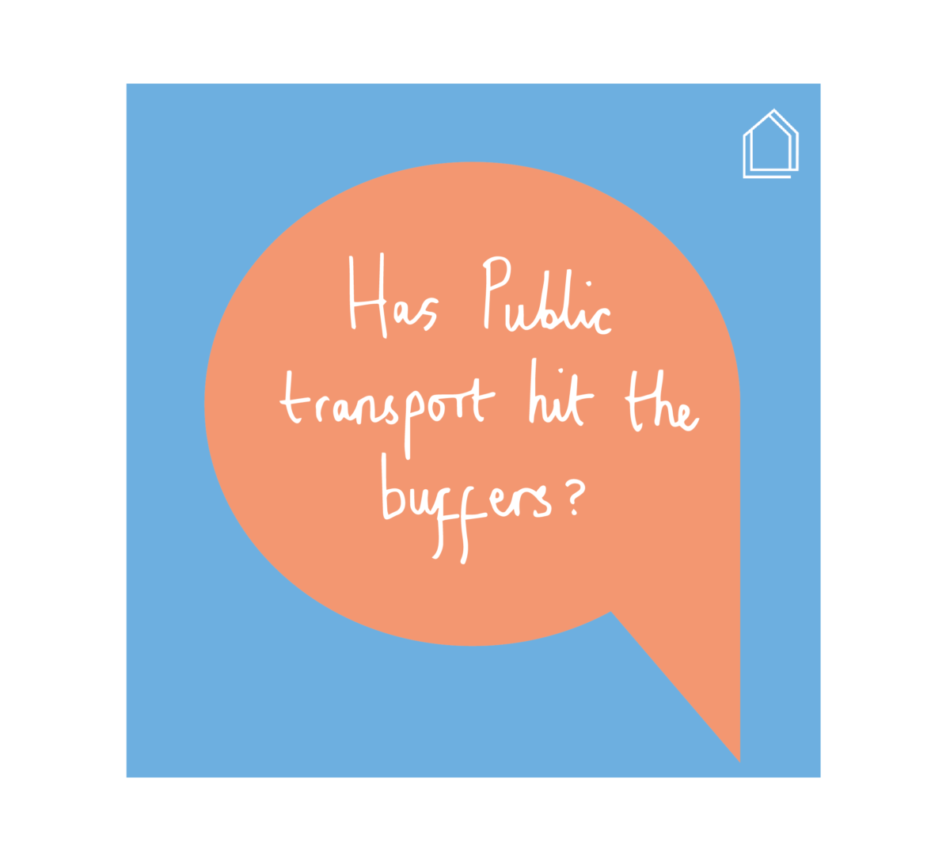Written by:
This Chat, Has Public Transport Hit the Buffers?, explored people’s perceptions of public transport, whether within or between towns and cities. We challenged our participants, who joined us from various regions of the UK, to consider how public transport is working for them and the role it plays in their lives and that of their communities. Above all, we were keen to explore how public transport can be reinvigorated through placemaking to better support people, places and the environment.
Key Themes
Public transport is a huge topic, but some key themes and observations emerged from our discussion. The first was the importance of, and challenges to, the infrastructure required to support effective public transport. The second was around connectivity, both within and across transport systems and as a means of connecting people with key services and each other. And finally, we also talked about the role of public transport (buildings and vehicles) as community or social spaces and as a threshold to adventure and exploration.
Improving our Public Transport Infrastructure
We very quickly focused on the need for a national, regional and local public transport infrastructure that is supported by both policy and industry. If we want more agile, environmentally friendly and reliable public transport, we need policies that actively support it. This includes investment in maintenance but also in innovation and manufacturing to ensure that essential infrastructure is in place, maintained and evolved.
It is no secret that public transport in the UK is owned and run by a large number of different providers, many of which are private commercial companies. It was noted that this variety of providers means that there is a great range of quality, availability and cost of transport within and between different parts of the country, but they don’t always “join up”. Participants shared some inspiring examples from the UK and abroad of well considered, well run and environmentally friendly transport infrastructure, but also of challenging experiences of local services that were simply not offering what was needed, or enough of it. Some promise what they cannot deliver. One participant asked the question, “Why do train companies sell more tickets than they have seats?”
At a time when our climate emergency makes public transport more and more crucial, this infrastructure is key not only to serving those who currently need it and use it, but also to tempting people away from cars. As one participant put it, “The more reliable and functional public transport is, the more likely people are to use it.”
We acknowledged that people’s work patterns and the daily rush hours mean that there are huge surges of people travelling at particular times of the day, and that this can stretch a public transport service to its limits. With that in mind, we wondered what a more flexible work culture, one that sees people travelling less frequently or shorter distances to work, and spreading their working hours differently, might do to help support a more efficient transport infrastructure.
Connectivity and Good Placemaking
In simple terms, public transport helps keep us connected. We use it to travel from A to B to C and many of us rely on it daily to go to work and to go about our daily tasks. With more people either unable or simply choosing not to be car owners, public transport is a necessity for many of us to get about. At a time when families and friendship groups are increasingly geographically dispersed, it also plays a vital role in bringing families and communities back together.
Our Chat group spoke about public transport as an essential service that is both comparable and essential to effective healthcare, housing and social care, and that for this reason, it should be something that is available and reliable for all. We shared various examples of people struggling to access the healthcare they need because of lack of public transport, and the difference a well positioned bus stop or train station could make. Others spoke of the sense of isolation felt by some communities, whether in rural locations or in housing developments outside town and cities, which are not well served by public transport.
Good transport is an essential ingredient not only of tackling our climate emergency but also of good placemaking. We need to get it right, invest in it, promote it and look after it if we want to create more socially, economically and environmentally successful places.
Nurturing Community and Curiosity
One of the key aspects of this Chat was exploring people’s positive experiences and memories of public transport. We shared memories of setting off on adventures to explore new places with our parents and grandparents, children and grandchildren. We spoke of the opportunity to discover new parts of the city, country and further afield, as well as the different views and vantage points from the top of a double decker bus, and the conversations they inspired.
We noted some clear differences between the experience of using public transport in urban, suburban and rural environments, as well as cultural differences from country to country, that might influence how people behave and interact while en route. In some places buses, trams and trains might be filled with conversation and laughter, in others people sit silently, not engaging with their neighbours. In either case, these spaces offer us a window into a community and the diversity of people within it. Some services that regularly serve the same group of travellers, even if those travellers do not know each other, can also develop their own sense of community.
This led to an interesting discussion around how communities could both contribute to and benefit from local train and bus stations being spaces for connection, exchange and community building. We shared examples of book and clothes exchanges, community fridges and community gardens that we had encountered at tube and train stations. We reflected on the “public” nature of these spaces making them feel shared, neutral spaces that everyone had the right to use.
This chat had a few clear messages, but perhaps one of the most important was the focus on the word “public” being at the heart of what public transport should and could be. It is an essential service and with the right infrastructure and investment, could do so much more for people and our environment. Along with satisfying our need to get from one place to another, public transport offers a world of opportunity to nurture people, communities and our ecologies. As such, it should be available and belong to all of us.


